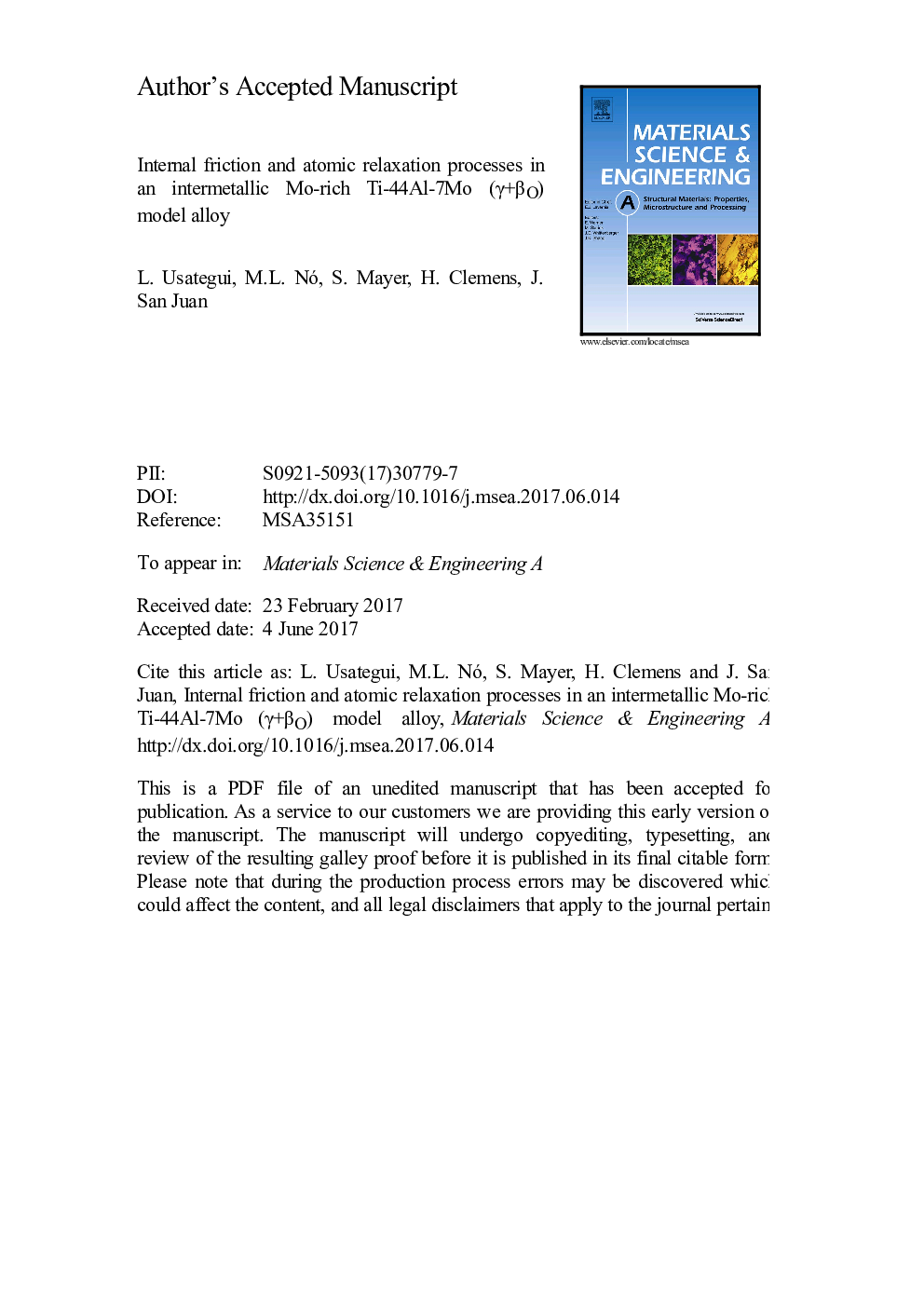| Article ID | Journal | Published Year | Pages | File Type |
|---|---|---|---|---|
| 5455471 | Materials Science and Engineering: A | 2017 | 39 Pages |
Abstract
The design of the next generation of β-stabilized γ-TiAl based alloys as structural materials for high-temperature applications in aircraft engines requires the precise knowledge of the mobility of defects in the ordered βo phase. To reach this goal a Mo-rich prototype alloy has been specifically produced and investigated. The mobility of defects, between 600 K and 1635 K, has been studied by mechanical spectroscopy. The internal friction spectra show a relaxation peak P1 (at 1130 K for 1 Hz) superimposed to a high-temperature background. We demonstrate that the relaxation peak is taking place inside the βo phase and measure an activation energy of EP1 = 3.55 ± 0.05 eV. An atomistic model is additionally proposed to explain this relaxation peak, which is attributed to a Zener-like mechanism of stress-induced Mo-Mo dipoles reorientation by exchange with a vacancy, and consequently the measured activation energy corresponds to the one for Mo diffusion in the βo phase.
Related Topics
Physical Sciences and Engineering
Materials Science
Materials Science (General)
Authors
L. Usategui, M.L. Nó, S. Mayer, H. Clemens, J. San Juan,
